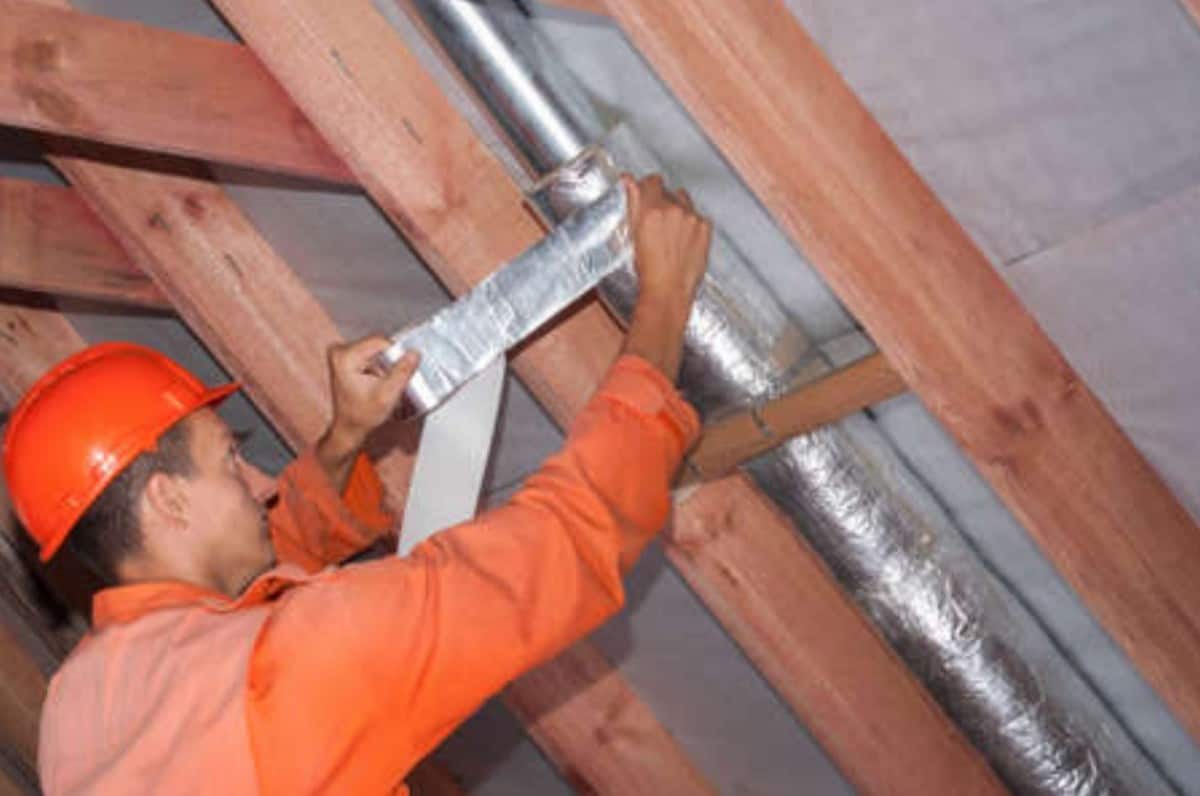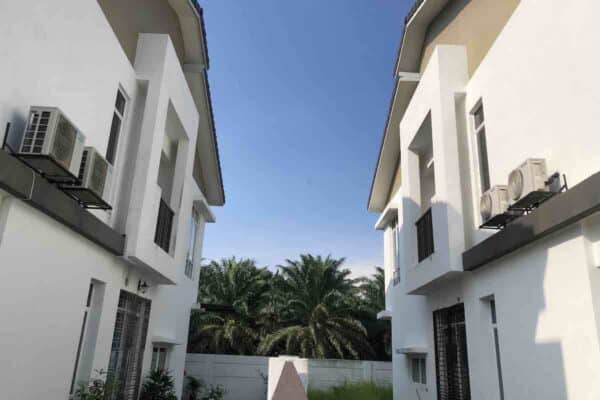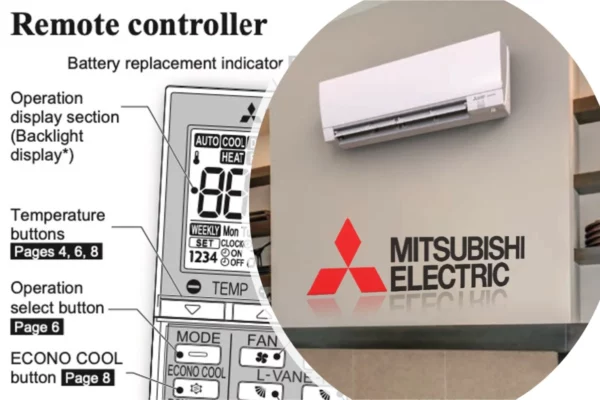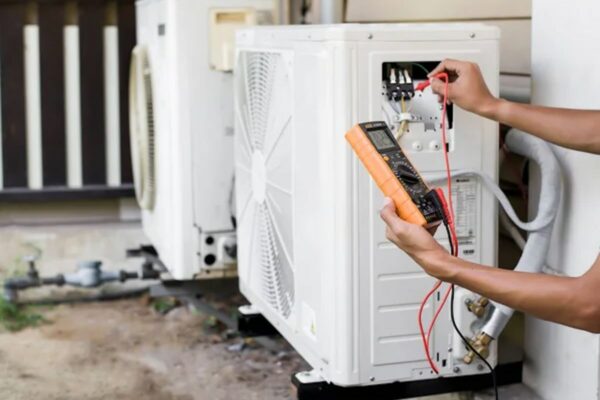5 Types of Insulation Used in Air Conditioning
Insulation is crucial to the performance of air conditioning systems. So, what are the common types of insulation used in air conditioning?
There are 5 common types of insulation used in air conditioning as follow:
- Closed Cell Insulation
- Polyurethane (PU) Insulation
- Fiberglass Insulation
- Polyethylene (PE) Insulation
- Rockwool Insulation
An air conditioning system required insulation to reduce energy losses and achieve high efficiency. Besides, insulation prevents condensation on pipes and the body of air conditioners.
Furthermore, insulations are used to soundproof mechanical rooms and air conditioners.
Insulation thickness and density determine the strength of thermal insulation. The thicker the insulation, the better the insulation.
Similarly, the higher the density, the better the insulation. However, cost is an important factor when choosing insulation. Hence, the best insulation is the one with the right application.
1. Closed Cell
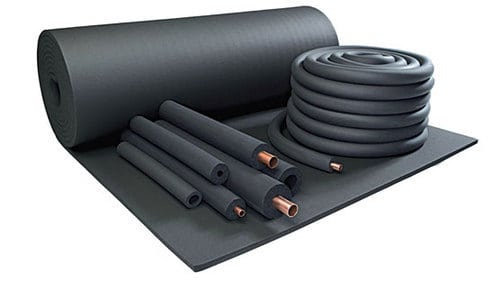
Closed-cell insulations are commonly used for air conditioning refrigerant copper pipes and drain pipes. Many air conditioners and chillers also used closed cell insulation for their internal pipes and body.
Closed-cell insulations are usually black in color and they are soft like a sponge but with a smoother surface.
The word “closed-cell” is less used by the people in the air conditioning industry. People working in the air conditioning industry often refer the closed-cell insulation by their brand name.
Some of the common names for closed-cell insulations are Armaflex and Superlon.
Closed-cell insulations can be found in split, multi-split and VRF air conditioning systems. These air conditioning systems have copper pipes for the refrigerant and drain pipes for the condensate water.
Both pipes are low in temperature and thus, they must be insulated to prevent condensation and the formation of water droplets.
Split and multi-split air conditioning systems usually used closed cell insulation with a thickness of 3/8″ while for the VRF air conditioning system, the insulation thickness often is 1/2″ to 1″.
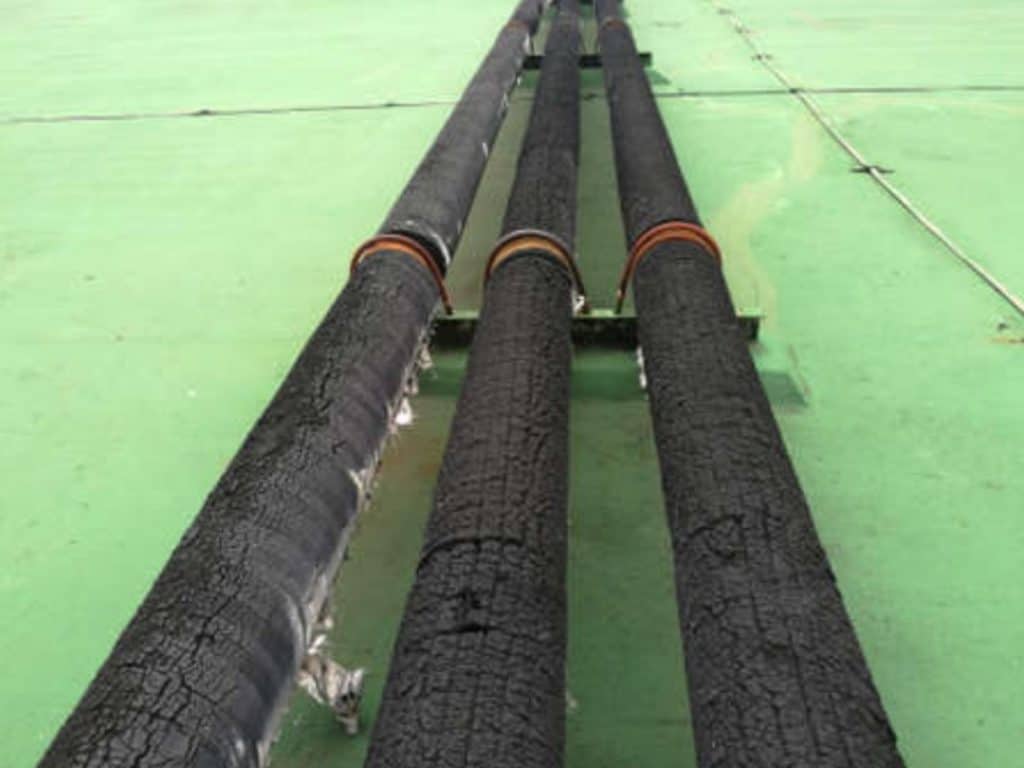
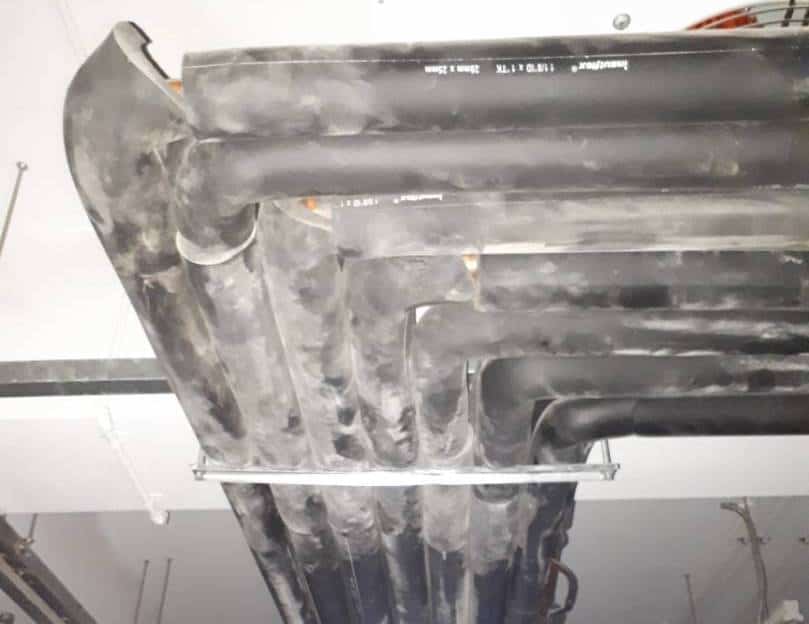

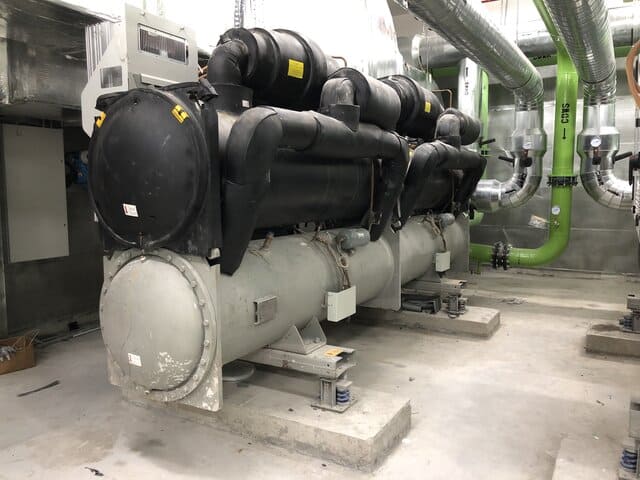
Closed-cell insulations come in different forms. The most common one is tube form where the copper or drain pipe is slotted into the tube insulation by hand.
The tube insulation has standardized sizes in accordance with the size of copper pipes and drain pipes. The length of tube insulation is usually 6 ft per length.
Other forms of closed-cell insulation are roll and sheet. Roll form makes it easy to carry and it is usually used for bigger pipes that beyond the standard sizes of the tube form.
Meanwhile, closed-cell insulations cut into sheet form have various sizes that used for specific applications.
The installation of closed-cell insulation is relatively simple and easy. However, it involved specific accessories such as insulation adhesive where it is used to glue two insulations together.
Another accessory is insulation foam tape where it is also used for the jointing of the insulations.
Often, black tapes are associated with the use of closed-cell insulations.
2. Polyurethane
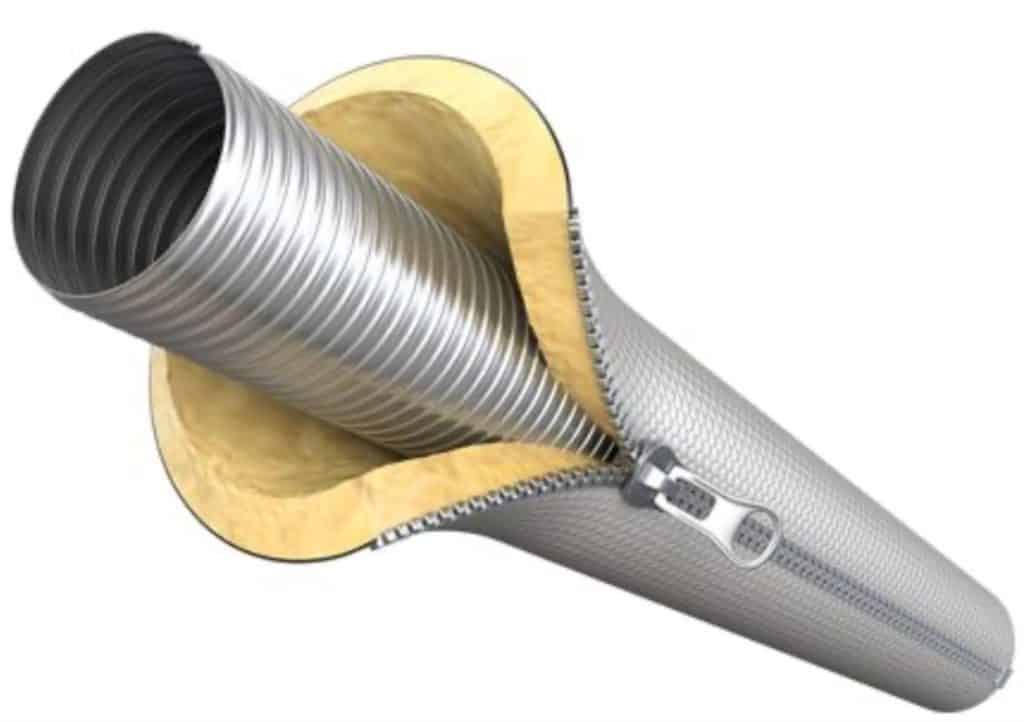
Polyurethane (PU) insulations are commonly used for air conditioning chilled water pipes. PU insulations also can be found in the panel of air handling units (AHUs).
In some applications, PU insulations are sprayed onto concrete slabs to insulate the floor with normal room temperature from the floor above that are heavily air-conditioned to a very low room temperature.
PU insulations for chilled water pipes are mostly pre-insulated.
Chilled water pipes are usually pre-insulated in the factory rather than on-site because it is more difficult and costly to insulate on-site.
However, the joints of the chilled water pipe are inevitably required to be PU insulated on site.

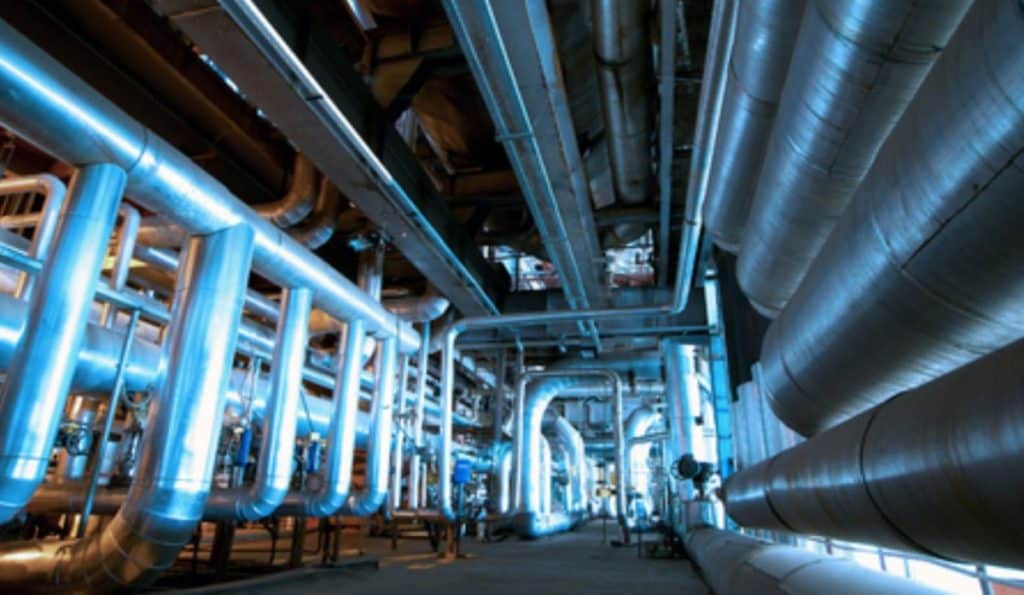
Most chilled-water pipes have around 2″ of PU insulation. However, the insulation thickness slightly varies with the pipe size. Apart from thickness, the density of PU insulation is also crucial to its insulating strength.
Many chilled water pipes used 45 kg/m3 density of PU insulation.
PU insulations have a layer of round duct around the outer surface to protect and hold the PU insulations. Such a layer of round duct is commonly referred as PU jacketing. The PU jacketing is usually made of aluminium or galvanized steel at a thickness of around 0.7mm.
Similar to pre-insulated chilled water pipes, the panel of AHUs is also pre-made. AHUs are always insulated by themselves and thus, additional insulations on-site are not required. AHU panels usually have a thickness of 25mm or 50mm depending on the requirement.
Chilled water pipes have been using carbon steel pipes as their carrier pipes for centuries. Now, there is a new material available on chilled water pipes. You can check out my post on the new HDPE chilled water pipe after this.
In the meantime, I would like to inform you that you can learn quicker by getting my HVAC Begin (eBook) if you’re a beginner. But, if you have a year or two of experience, then I would suggest you consider my HVAC Basics (eBook). Nonetheless, I encourage you enroll in my HVAC Beginner Course: 10 Days to Become Competent in HVAC if you want to equipped yourself with a complete set of basic HVAC skills.
HVAC Beginner Course
Learn the most basics and foundational HVAC skills including cooling capacity calculation, equipment selection, duct sizing, pipe sizing, exhaust fan sizing, controls, electrical and more.
3. Fiberglass

Fiberglass insulation can be found on the ductwork of air conditioning systems. The insulation of flexible ducts used in air conditioning are always fiberglass. Rigid ducts of air conditioning system are commonly insulated by fiberglass insulations.
Fiberglass insulations are soft and puffy but they are harmful to humans when inhaled. Fiberglass insulations often have a layer of aluminium foil on the outer surface to protect and contain the fiberglass.
Adhesives or glues are required when installing the fiberglass insulation onto rigid metal ducts.
Flexible ducts are usually pre-insulated at the factory rather than on-site. On the other hand, fiberglass insulations for rigid ducts are usually wrapped on site. Rigid ducts that insulated with fiberglass are often shiny (due to the aluminium foil) and wrinkly.
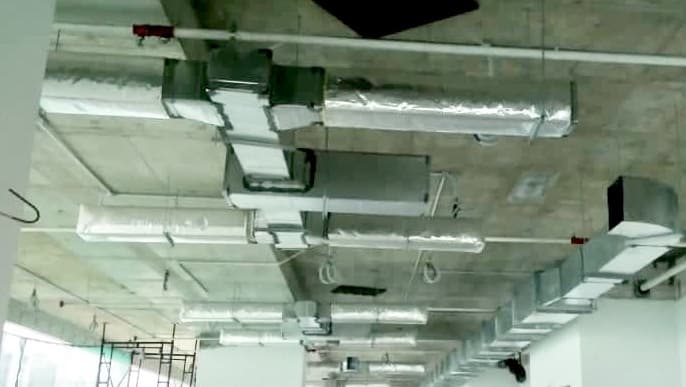
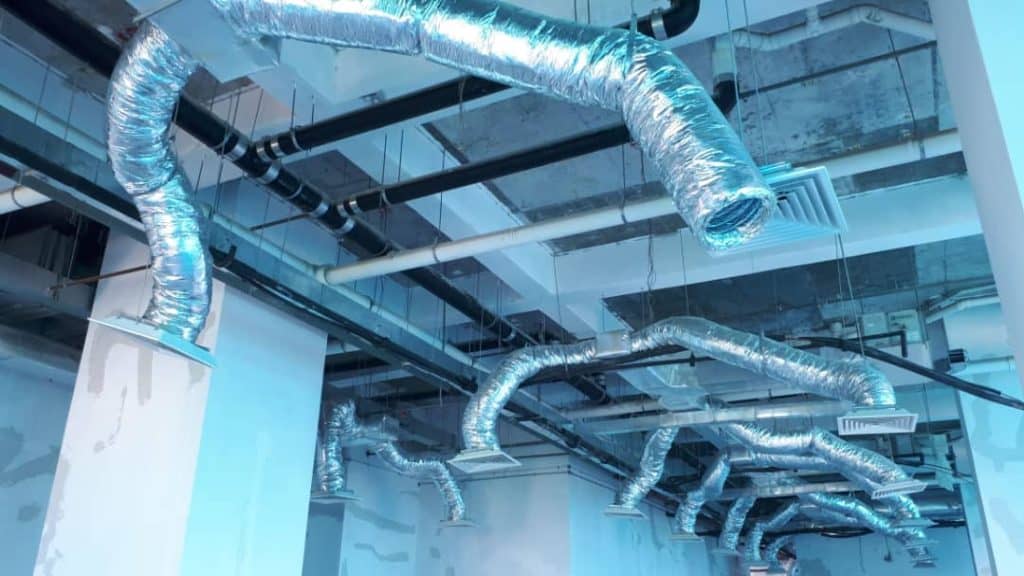
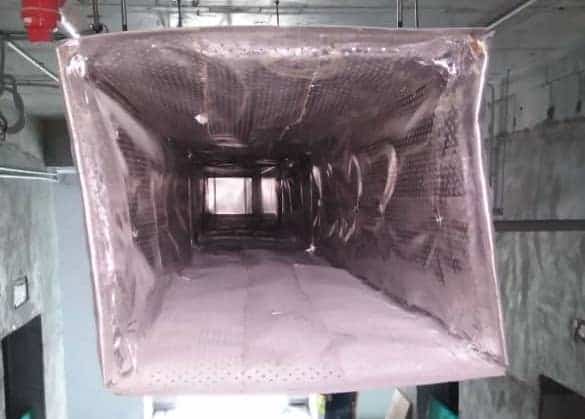
Fiberglass insulations usually come in rolled blanket form. Installers are required to cut it by themselves as needed, glue it to the aluminium foil and wrap it around rigid ducts. The blanket form is great for irregular surfaces.
In addition, fiberglass insulations also come in board form where it is pre-cut into certain sizes. Board form is usually used to soundproofing a room by installing them on the wall.
Furthermore, fiberglass insulation also can be installed on the internal surface of rigid ducts to absorb the noise of the air conditioners.
Such applications usually use perforated metal sheets to hold the fiberglass firmly instead of aluminium foil due to high wind speed.
The thickness of fiberglass insulation for flexible ducts is usually 1/2″ and 1″ depending on the requirement. For noise-absorbing applications, the thickness of the fiberglass is usually 1″ or more.
Fiberglass insulations are prone to over-compression because it is so soft. Over-compressing fiberglass insulations can reduce their insulation strength by as much as 50%.
Fiberglass is naturally fire-resistant though it looks like a kind of cotton that can catch on fire easily. A pair of gloves and a mask is strongly recommended when handling fiberglass as inhaling it is harmful and contacting it can cause itchy skin.
4. Polyethylene
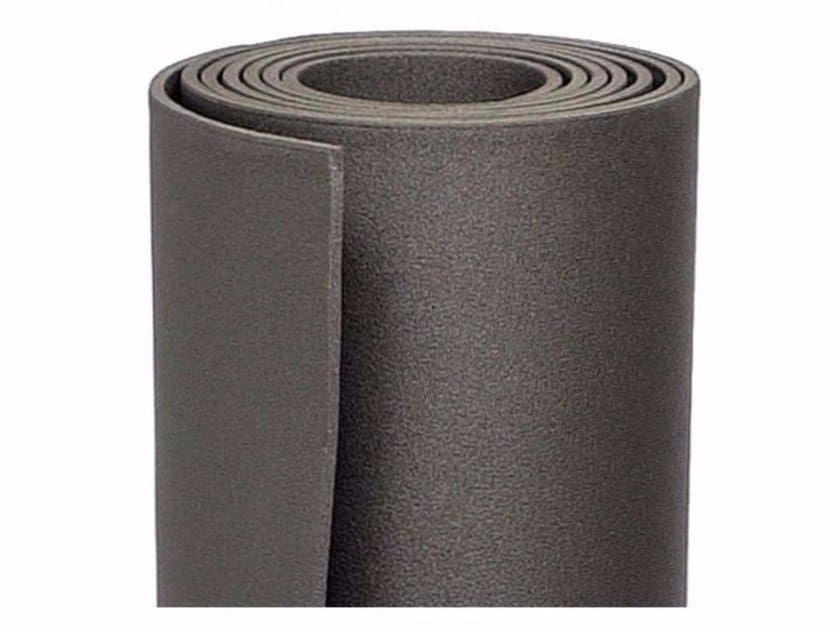
Polyethylene (PE) insulations are commonly used for the rigid duct in air conditioning systems. PE insulations also can be found on the body of some types of air conditioner such as fan coil units and ceiling cassettes.
PE insulation is a form of closed-cell insulation. However, PE insulations are often grey in color. Most PE insulations come in roll form for the duct installers to cut into specific sizes for their applications.
Insulation glue also needed when insulating rigid ducts with PE. Rigid ducts are usually insulated with PE before they are lifted and hanged.
The thickness of PE insulations for air conditioning rigid ducts can be around 3/8″ to 1″ depending on the requirement. Furthermore, PE insulations also can be found on the plenum box and supply air diffuser of air conditioning system. However, their PE insulation is often thinner than rigid ducts.
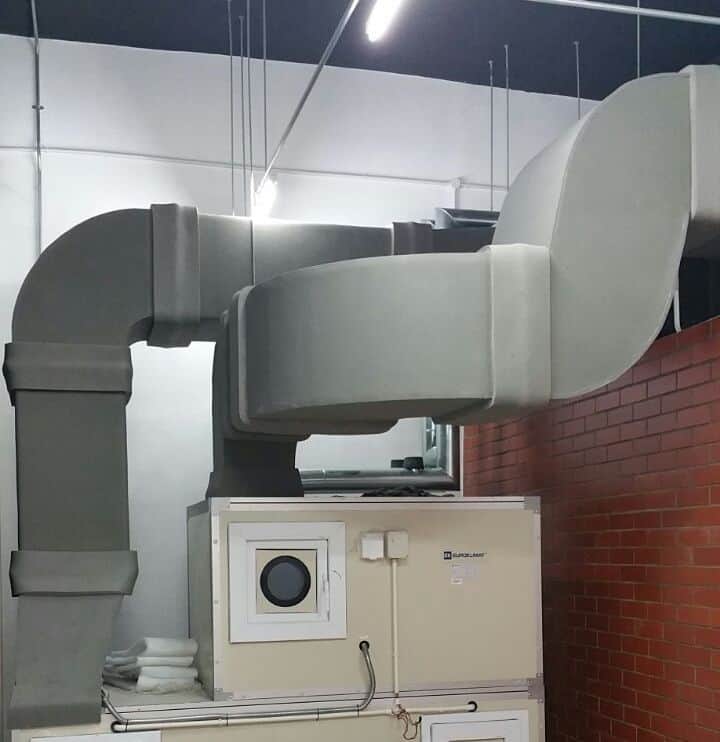
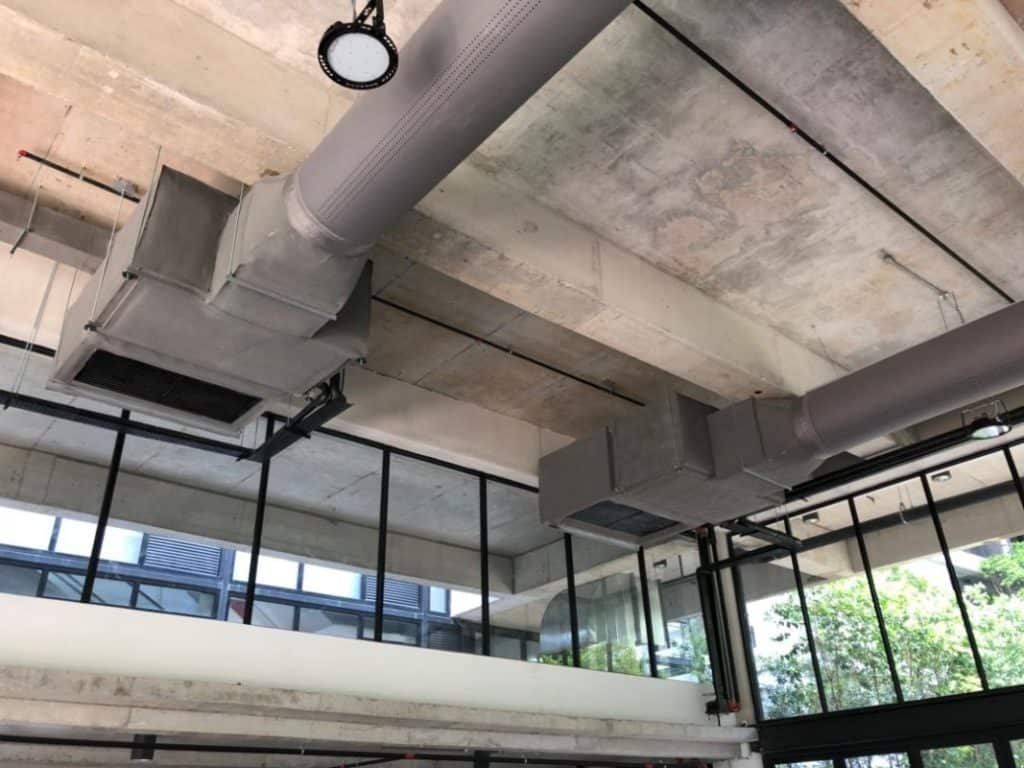
For non-concealed ducts, PE insulations are usually preferred over fiberglass insulations due to better looking. Unlikely the wrinkly fiberglass insulations, PE insulations are firmer which makes them stay flat on ducts.
However, PE insulations are more costly than fiberglass insulations and thus, they are less preferred for concealed ducts.
PE insulations are unable to absorb noise like fiberglass insulations do. Hence, they are not found on the internal surface of rigid ducts. However, PE insulations are much easier to repair compared to fiberglass insulations.
While fiberglass is fire-resistant, polyethylene is combustible. However, polyethylene can become fire-resistant when treated with fire-retardant chemicals. Meanwhile, PE insulations are not harmful like fiberglass insulations do.
5. Rockwool
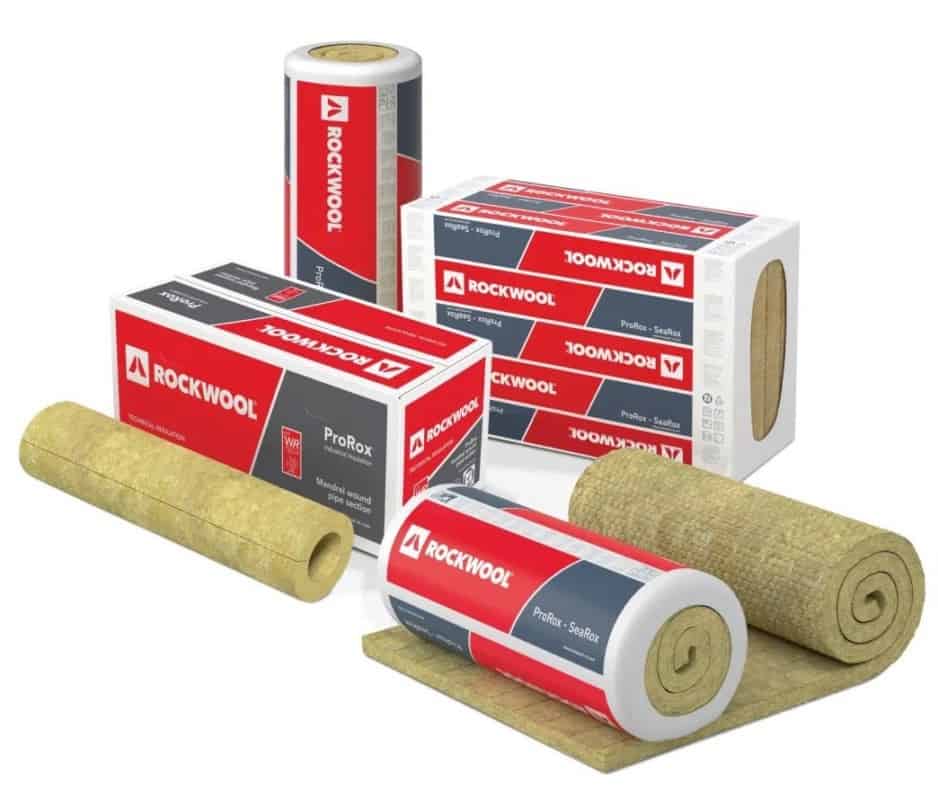
Rockwool insulations can be found on the wall of a mechanical room for the air conditioner. They are used to soundproof the room from the loud noise generated by air conditioners.
Rockwool is actually a company name. The scientific name of the said insulation material is stone wool. Rockwool is a company that manufactures stone wools. Rockwool is so popular that people use Rockwool instead of stone wool when referring to the insulation material.

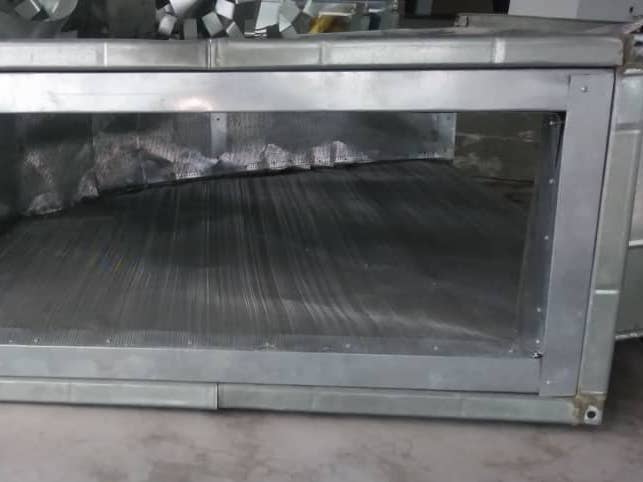
Rockwool is soft but not as soft as fiberglass and polyethylene. Air conditioning ducts usually don’t use Rockwool insulations. Unlike polyethylene, Rockwool is fire-resistant.
Like any other mineral wools, Rockwool is harmful to humans when inhaled and contacted. However, Rockwool is not as bad as fiberglass because it is not as easy to spread as fiberglass.
Nevertheless, it is still advisable to wear proper protection when handling Rockwool.
Rockwool insulations commonly come in rectangular shapes. Because they are firmer and less harmful than fiberglass, they are more popular to be used to soundproof rooms.
Rockwool insulations are usually protected and held by perforated metal sheets firmly on the wall when used to soundproof a room.
Moreover, Rockwool insulations can be used to absorb the noise of air conditioners when installed on the internal surface of rigid ducts just like fiberglass insulations. More often, Rockwool is preferred over fiberglass because it is less harmful and physically stronger.
However, Rockwool is more costly than fiberglass.
Rockwool insulations are not found on the flexible ducts. Also, they are not preferred to be used to insulate rigid ducts. Rockwool insulations are much heavier than fiberglass and polyethylene. If used on rigid ducts, the duct appeared to be sagging as the Rockwool can’t hold itself on the duct.
Although Rockwool insulations are excellent insulators, they are not preferred for chilled water pipes because they can be easily damaged by water. When it comes to soundproofing, Rockwool insulations can be used to wrap around an air conditioner to reduce noise significantly.
Lastly, consider my HVAC Begin (eBook) if you’re a beginner and you want to have a foundational knowledge in HVAC. But, if you have a year or two of experience, then I would suggest you consider my HVAC Basics (eBook). Nonetheless, I encourage you enroll in my HVAC Beginner Course: 10 Days to Become Competent in HVAC if you want to equipped yourself with a complete set of basic HVAC skills.
HVAC Beginner Course
Learn the most basics and foundational HVAC skills including cooling capacity calculation, equipment selection, duct sizing, pipe sizing, exhaust fan sizing, controls, electrical and more.
If you have anything to add (or ask) about this topic, leave a comment down below!


